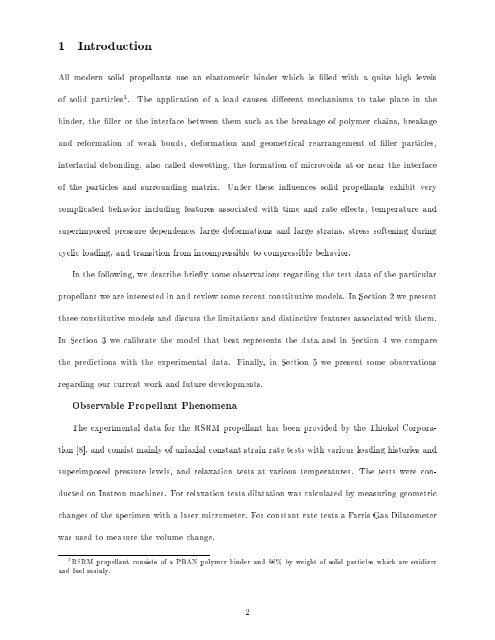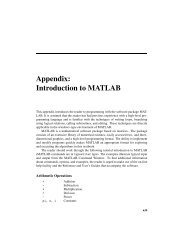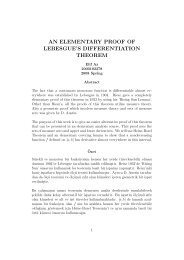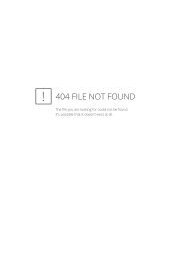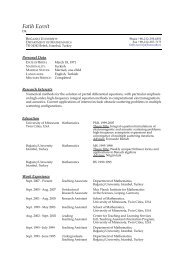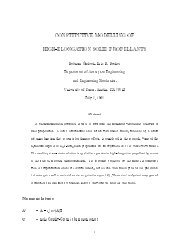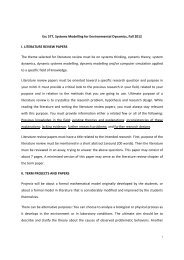CONSTITUTIVE EQUATIONS FOR SOLID PROPELLANTS
CONSTITUTIVE EQUATIONS FOR SOLID PROPELLANTS
CONSTITUTIVE EQUATIONS FOR SOLID PROPELLANTS
Create successful ePaper yourself
Turn your PDF publications into a flip-book with our unique Google optimized e-Paper software.
1 Introduction<br />
All modern solid propellants use an elastomeric binder which is lled with a quite high levels<br />
of solid particles 1 .<br />
The application of a load causes dierent mechanisms to take place in the<br />
binder, the ller or the interface between them such as the breakage of polymer chains, breakage<br />
and reformation of weak bonds, deformation and geometrical rearrangement of ller particles,<br />
interfacial debonding, also called dewetting, the formation of microvoids at or near the interface<br />
of the particles and surrounding matrix.<br />
Under these inuences solid propellants exhibit very<br />
complicated behavior including features associated with time and rate eects, temperature and<br />
superimposed pressure dependence, large deformations and large strains, stress softening during<br />
cyclic loading, and transition from incompressible to compressible behavior.<br />
In the following, we describe briey some observations regarding the test data of the particular<br />
propellant we are interested in and review some recent constitutive models. In Section 2 we present<br />
three constitutive models and discuss the limitations and distinctive features associated with them.<br />
In Section 3 we calibrate the model that best represents the data and in Section 4 we compare<br />
the predictions with the experimental data. Finally, in Section 5 we present some observations<br />
regarding our current work and future developments.<br />
Observable Propellant Phenomena<br />
The experimental data for the RSRM propellant has been provided by the Thiokol Corporation<br />
[8], and consist mainly of uniaxial constant strain rate tests with various loading histories and<br />
superimposed pressure levels, and relaxation tests at various temperatures. The tests were conducted<br />
on Instron machines. For relaxation tests dilatation was calculated by measuring geometric<br />
changes of the specimen with a laser micrometer. For constant rate tests a Farris Gas Dilatometer<br />
was used to measure the volume change.<br />
1 RSRM propellant consists of a PBAN polymer binder and 86% by weight of solid particles which are oxidizer<br />
and fuel mainly.<br />
2


